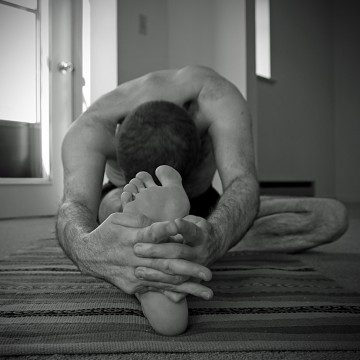Misconceptions About Stretching
Wednesday, September 10, 2014

Photo Credit: Nicholas_T via Compfight cc
In fact, the desire to stretch is so ingrained in us that we often do it without any conscious thought first thing in the morning and as we get tired throughout the day. So why is it so many people are walking around with stiff muscles and joints and why is it so hard to get them to stretch properly?
A big part of the problem is how stretching is taught to us when we are very young. Remember above, the mention that it’s a universally occurring act? Well, humans, especially humans in developed countries, tend to become consumed with the idea that there is a right and a wrong way to go about things and these ways are applicable to everyone.
It's about the way it feels, not the way it looks
So we teach kids how to perform stretches at an early age, an age where most of them aren’t carrying any tension anyway, and in doing so, they learn how it should look instead of how it should feel. The reason this is an issue is because stretching is all about feel.
Between genetics and life, our bodies are shaped in very unique ways, so that two people who live incredibly similar lives could be carrying tension in significantly different ways, and as such, would need drastically different stretching routines. But without a knowledge of how to properly approach stretching and how it should feel, these two individuals have no real way to determine for themselves what they need to do and may in fact end up hurting themselves by doing what they’ve been taught to do.
So let’s jump ahead a few years. The kids from the previous paragraph are now teenagers and, for the sake of argument, let’s say they are playing sports. There is a greater emphasis on injury prevention now then there was when I attended school, but some of the negative lessons still remain and a few new ones have been added.
One of the biggest mistakes that has been perpetuated when it comes to stretching is that it should be done before a workout, sometimes prior to even warming up.
Here’s why this is a problem: prior to engaging in physical activity, the muscles are at their shortest and tightest. That’s why it’s called a warm-up. Light to moderate exertion which forces the muscles to expand and contract allows them to loosen and stretch far better that forcibly lengthening them through more traditional stretches.
Stretching prior to warming-up, especially if it’s forceful or quick, increases the chances of injury instead of decreasing them.
The best time to stretch
So when is the best time to stretch? After a workout or at night before bed works the best for preventing post-workout soreness as well as speeding recovery times and increasing the strength building benefits of the workout.
When we use our muscles, they contract and shorten in order to move us or the weight we are lifting. When a muscle is trained over and over again to shorten, physiological and neural changes occur that reinforce that muscle shortening and eventually the body starts to believe the muscle should remain in that shortened position.
This increases the amount of tension placed on it, the muscles that balance it, as well as the connective tissue that surrounds it. By stretching the affected muscle, the body remembers how it should properly work, which for the individual means less tension and pain. But how do you choose which stretch to do? That’ll have to wait till another time.
Andrew Hill_180_180_90_180_180_90.jpg)




Follow us on Pinterest Google + Facebook Twitter See It Read It